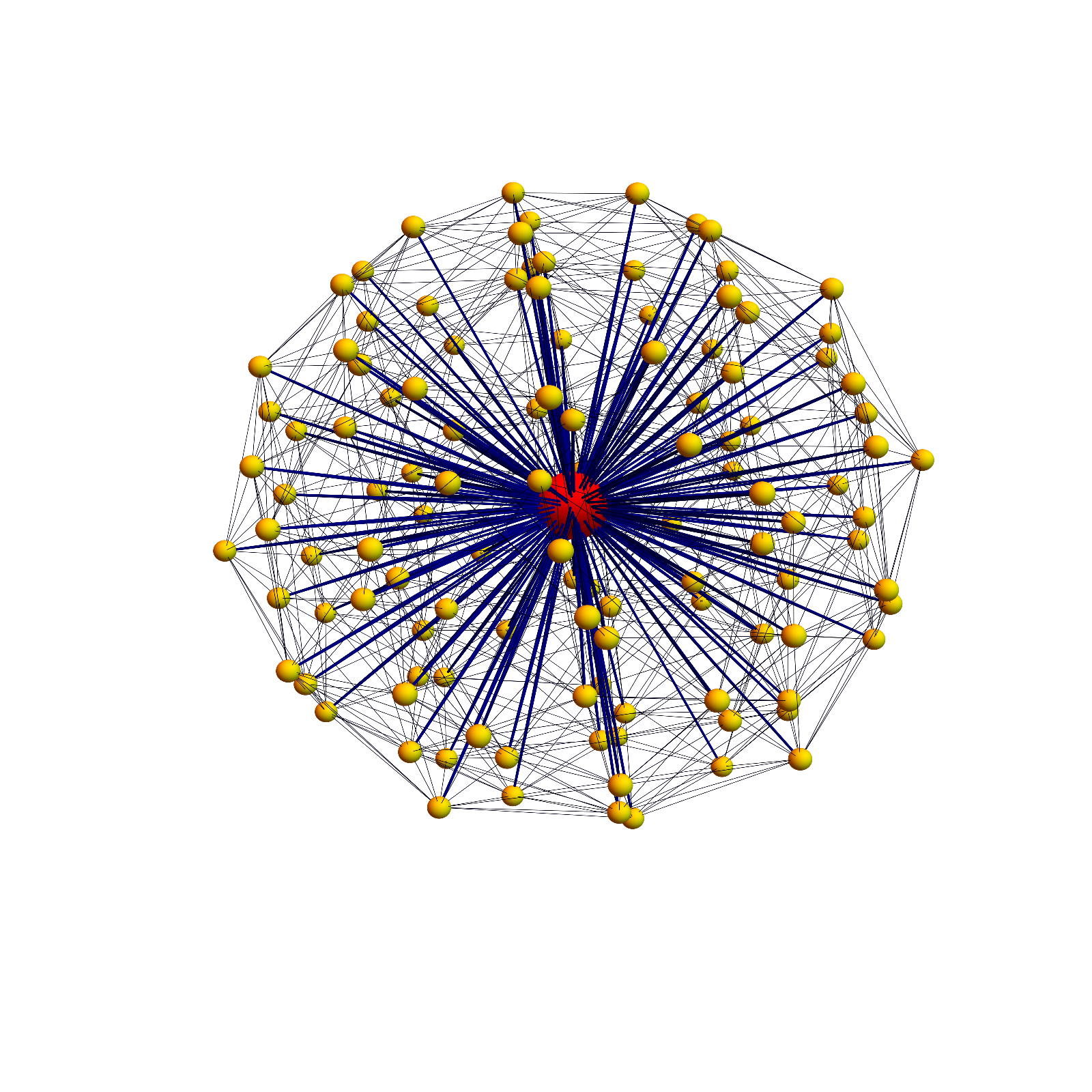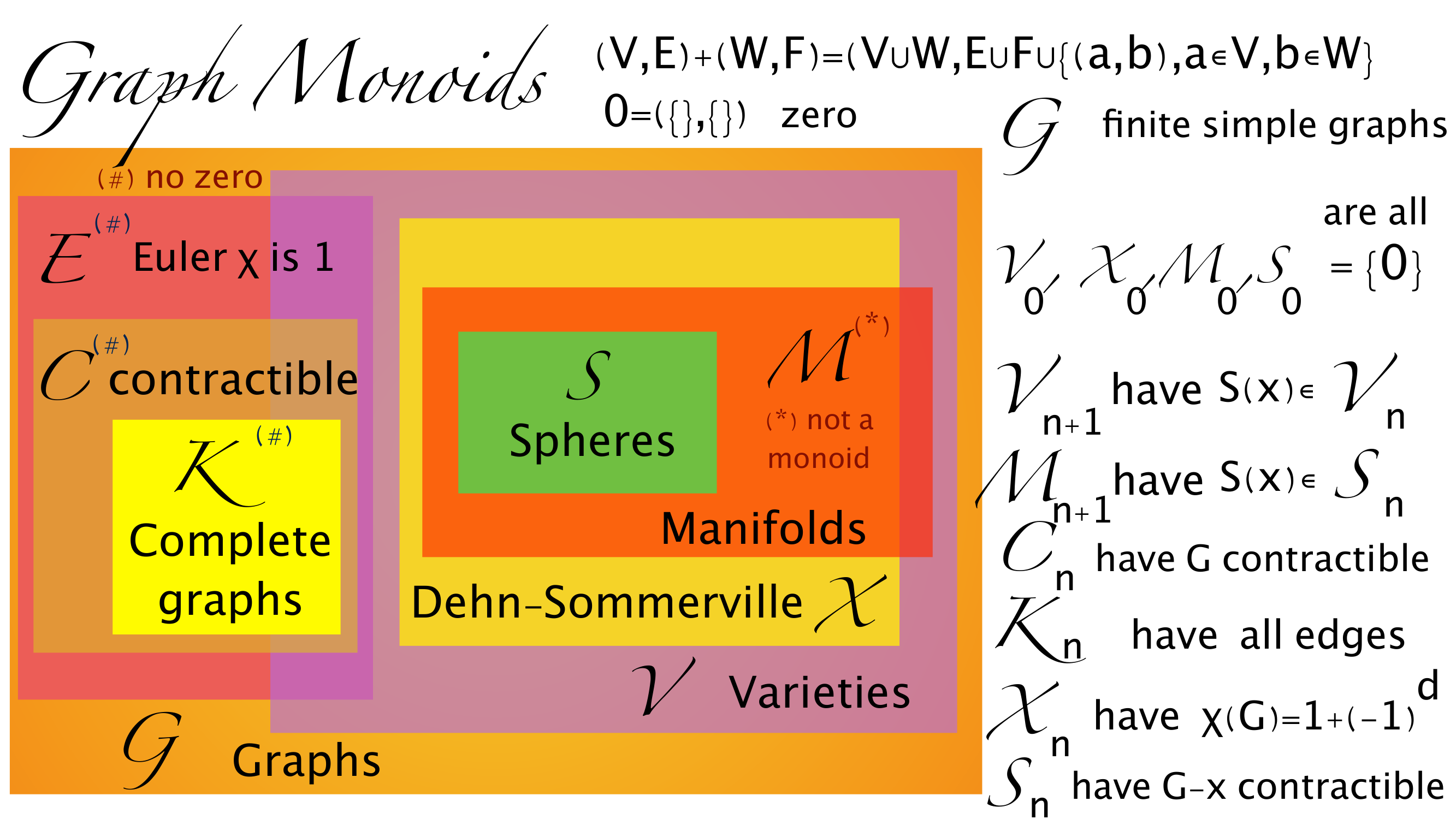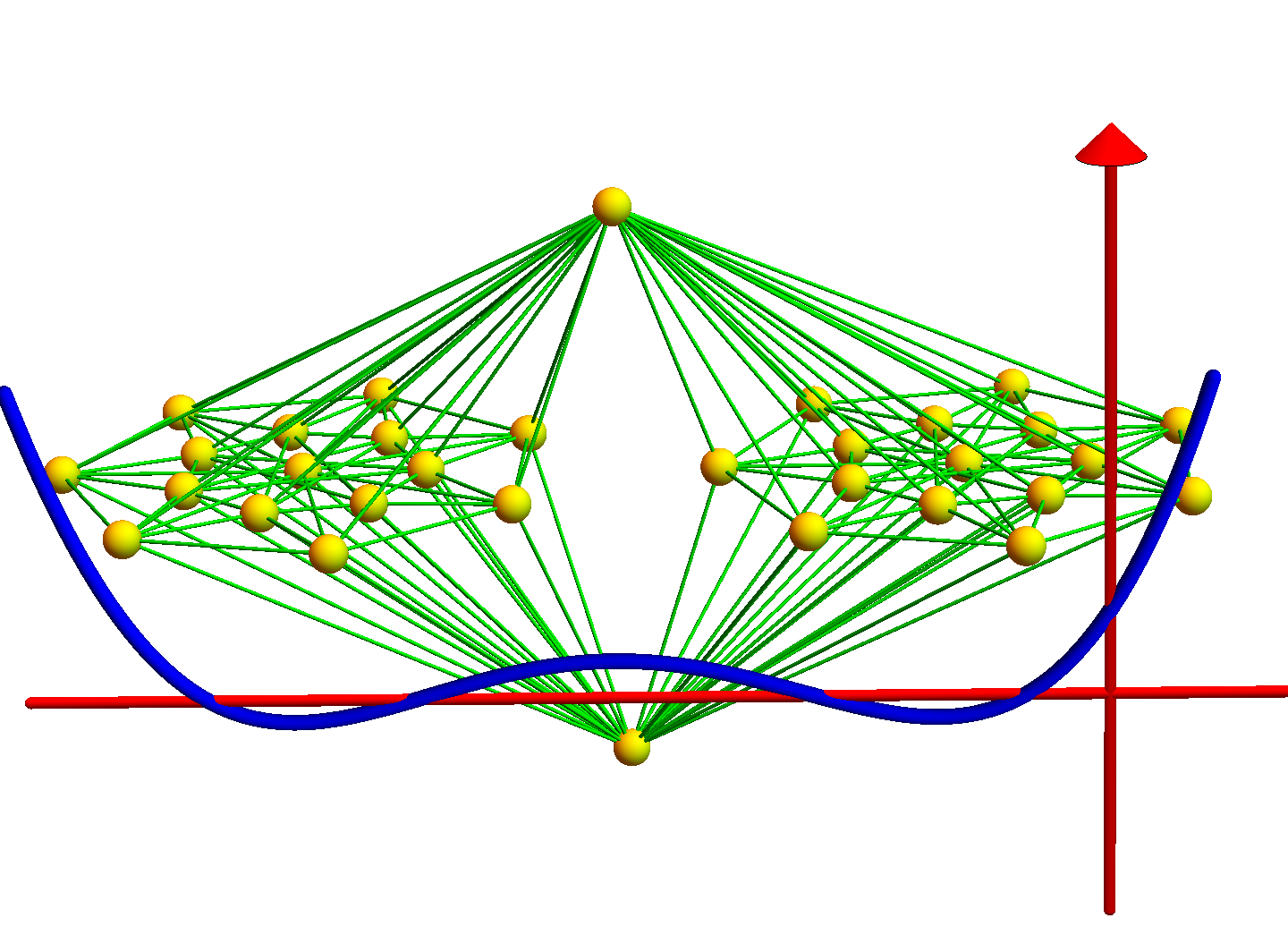The Dehn-Sommerville equations are symmetries for spaces that are of “Euclidean nature”. Nice triangulations of odd-dimensional manifolds, or triangulations of even-dimensional manifolds with Euler characteristic 2 work, but these symmetries also hold for more exotic spaces which can be locally “knotted”. Historically, the relations were first found for convex polytopes, which are spheres. New things start to happen in dimensions 4 and higher. We have here a new look at these equations and especially enlarge the class of geometric objects for which they hold. This can include for example Euclidean spaces of four dimensions, where for some of the points, the unit spheres are topological 3 spheres or any other 3-manifold. Euclidean spaces can be much more exciting than anticipated.

Some slides to a recent paper on Dehn-Sommerville: If you take the f-vector of a 4-manifold for example and multiply it with the vector (0,-22,33,-40,45) one always gets zero. For example, for the suspension of the 600 cell (one of the six platonic solids in 4 dimensions), which is a simplicial complex with f-vector (122,960,2640,3000,1200), this works. The suspension of the 600 cell is for a topologist a 4 dimensional sphere.
We define a class of simplicial complexes X which have the property that they are all Dehn-Sommerville and that they form a monoid. Unlike discrete manifolds, the class X is closed under the join operation and so forms a monoid. Start with $X_{-1}=\{0\}$, then define $X_d$ $=\{ G$, $\chi(G)=1+(-1)^d$, $S(x) \in S_{d-1}$, for all $x \in V(G) \}$, where $S(x)$ is the unit sphere of a vertex $x$, the graph generated by all the vertices attached to $x$. If we would skip the Euler characteristic assumption, we would get the elegant class of “varieties”, which produce nice pure simplicial complexes and also, unlike manifolds, form a monoid. A general graph in the nice class of varieties however does not satisfy Dehn-Sommerville relations.
We may be forced to stress again that the use of the language “graph” is by no means any restriction. Any simplicial complex can be described by a graph (just take the sets as vertices and connect two if one is contained in the other). It is true that the 20th century has belittled graphs. Sometimes they are treated as one-dimensional simplicial complexes but they carry much more structure. The Whitney complex in particular. But graphs also carry differential geometric notions like curvature. Especially in higher dimensions, where the curvature notions in higher dimensional situations are quite cumbersome in differential geometry (Gauss-Bonnet-Chern is usually not even taught in undergraduate courses as its proof requires to know a bit of less known multi-linear algebra like Pfaffians and uses a curvature for which we don’t have good intuition), the discrete case is very elegant and actually pivotal for understanding Dehn-Sommerville. The trick is to look not at Euler characteristic but at the f-function which as a special value encodes the Euler characteristic. Now, the f function of a complex is a sum of curvature functions, where the curvature function at a point is the anti-derivative of the f-function of the unit sphere. It is a bit as in Stokes theorem: we sum the anti-derivative over the boundary.
Â
Â
Â
 |
Â
Â

